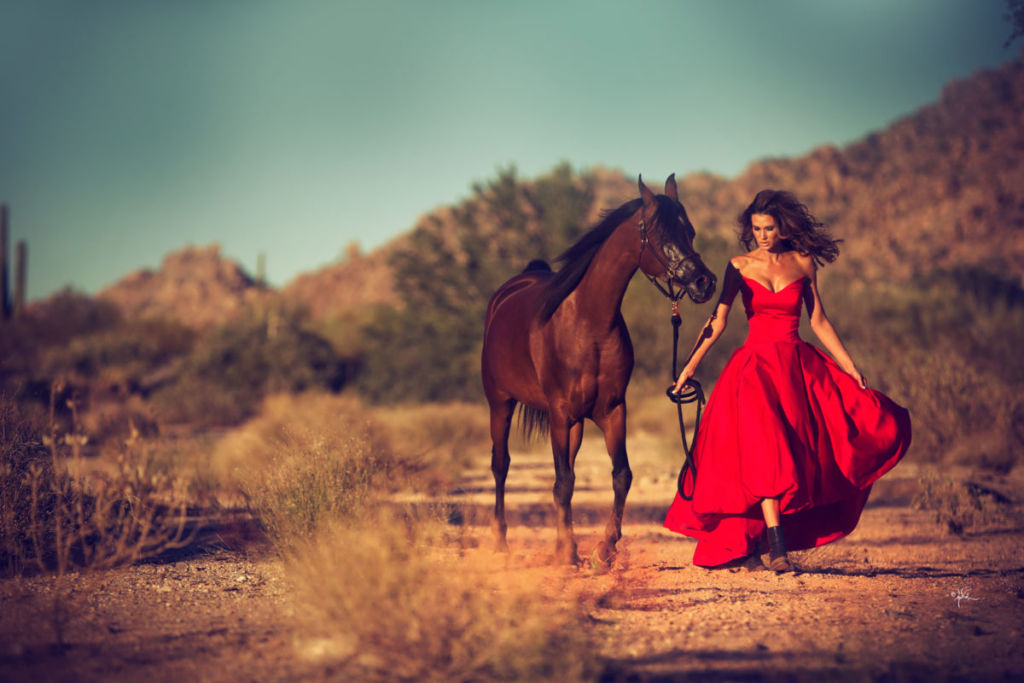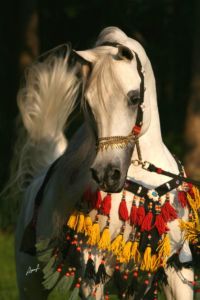Scottsdale’s Rich History & Legacy of the Arabian Horse
Posted on August 14, 2018 by Laura Lucky
Photo courtesy of The Arabian Horse Association of America.
Arabian horses are revered around the world as the crème de la crème of horse breeds. Fine-featured and graceful, the Arabian horse is often considered the equine epitome of beauty, elegance and sophistication. While the famed Arabian horse is admired and celebrated by cultures all across the globe, our Scottsdale has become the international hub for the breed.
It’s fitting perhaps, that Scottsdale should be associated with something so illustrious and legendary as the Arabian horse. Known for its own stunning beauty, enviable style and notable luxury; Scottsdale is well-regarded as an admired destination. Truly a feather in Scottsdale’s cap, the cachet and status that its connection with the Arabian horse offers is just one more dynamic attribute of our city.
The world’s longstanding fascination with the Arabian horse is in part due to its history. As the world’s oldest horse breed dating back thousands of years, the Arabian horse originated in the deserts of the Middle East and has influenced the breeding and development of horses ever since. Known as the purest-bred of all animals, the Arabian horse enjoys a distinct mystique of beauty, courage and romance.
During the post-war era of the 1950s, well before Scottsdale was beginning to bloom into the city it is today, a handful of families began importing Arabians from Europe. Some of the most famous and influential Arabian horses were brought back to Scottsdale by horse lovers and breeders with names you might find familiar. McCormick, Gainey, Chauncey, Wrigley: these are some of the first families in Scottsdale that owned large Arabian horse farms, which have since been developed as high-end real estate communities and are beautiful fixtures of Scottsdale today.
One such Scottsdale resident, Bob Aste, bought a special stallion that had been rescued from war-torn Poland, seized by the Germans and confiscated by American forces. Brought to the U.S. by General Patton, the stallion Lotnik was one of the prized horses that the Nazi regime had coveted for their scheme of breeding a “horse master race.” Once brought to Arizona, Lotnik’s legacy continued as the sire for hundreds of horses bred locally and abroad.
The arrival of these Arabian horses attracted the attention of the wealthy, and the large landowners in the area. Soon, the popularity of the enchanting Arabian horse began to grow in Scottsdale. These early Arabian owners wanted to find a way to promote the breed to the public, and created The Arabian Horse Association of Arizona.
Carole Collins-O’Connor grew up in the burgeoning Scottsdale Arabian world. As one of the founding families of the Association and still a current board member, Collins-O’Connor has been involved with Scottsdale’s Arabian association for over 50 years. “The rise of Arabians and the growth of Scottsdale go hand-in-hand,” she says. “As people were moving here from across the country, they were introduced to, and fell in love with, the breed. And so, it grew. Some of the most powerful men in the country came to Scottsdale to see and buy the horses. Celebrities, movie stars, even President Reagan came to visit the farms and to attend the lavish auctions.”

Photo courtesy of The Arabian Horse Association of Arizona
As the popularity of the Arabian horse grew, so did the public’s fascination with it. The Wrigley family, which had become part of the owners group, shipped in their Arabian horses from Chicago every winter and the horses were often welcomed by the public at the train station. Observing the locals’ fascination with the horses, Wrigley offered his Arizona Biltmore Hotel as a venue for a small “horse exhibition.”
The year was 1954, and that first all-Arabian horse show was the impetus for the annual Scottsdale Arabian Horse Show that has since taken place each year. The Scottsdale show, now in its 63rd year, is the largest and most prestigious Arabian horse event in the world. Held each February at WestWorld, the now-iconic event brings with it gala parties, behind-the-scenes barn tours, educational seminars, international dining and abundant shopping.
Taryl O’Shea, the Executive Director for the Arabian Horse Association of Arizona, has seen the Scottsdale Show explode with growth over the last 20 years under her tenure. “The Scottsdale show is the largest and most prestigious Arabian show in the world,” says O’Shea. “Even foreign visitors hailing from the Arabian horses’ place of origin in the Middle East such as Dubai and Saudi Arabia come to Scottsdale to analyze the horses and determine which stallions they may want in their breeding programs.
“Due to the nature of horses and this competition, the Arabian show brings more money to Scottsdale than Barrett-Jackson and the Phoenix Open,” O’Shea says. “It’s an 11-day show, but competitors come for an average of 16.7 days so they have time to acclimate the horses before competition starts. Plus, when you count owners, riders, trainers, grooms and handlers – we’ve studied that every horse in the show comes with 3.4 people accompanying it.”
The economic impact that the Scottsdale Arabian Horse Show has on the City of Scottsdale is enormous. Between the horse owners that come to compete, the attendees that visit from all over the world, and the more than 300 vendors and exhibitors on site, a comprehensive study conducted by the Tourism Development Council estimates the yearly economic impact to be just under $98 million! Add in the hundreds of thousands of dollars raised each year for local charities and it’s clear to see how much the Arabian horse industry brings to Scottsdale.
Scottsdale’s Arabian horse heritage is continuing to expand. Now that Arabians are more affordable and accessible to almost anyone, their popularity among horse lovers continues to grow. Known for their intelligence, gentle disposition and desire to bond with humans, the Arabian horse presence in Scottsdale has a bright future.
As “The West’s Most Western Town,” Scottsdale’s association with the equestrian culture and lifestyle gives the city a charming and distinct character. While Scottsdale has blossomed into the thriving community it is today, the role that the Arabian horse has had on its growth and development through the decades is substantial. And that’s “straight from the horse’s mouth!”

Photo courtesy of The Arabian Horse Association of Arizona


